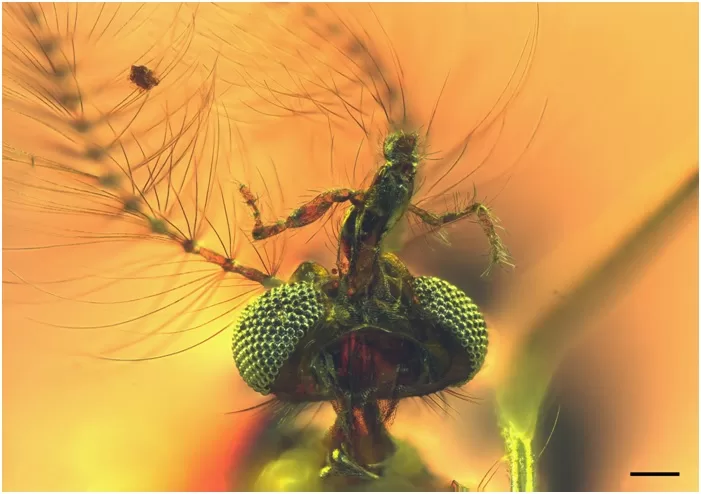Science & Environment
Ancient Mosquito Fossil Unveils a Surprising Bloodsucking Twist

Highlights
- Oldest-known mosquito fossils discovered, dating back 130 million years to the Cretaceous Period.
- Surprising find of two male mosquitoes trapped in amber near Hammana, Lebanon.
- Male mosquitoes exhibited elongated piercing-sucking mouthparts, a feature typically seen only in females.
- Bloodsucking behaviour in males challenges the conventional understanding of mosquito feeding habits.
- Fossils reveal a sharp and triangle-shaped jaw anatomy with tooth-like projections.
- The unique discovery suggests an evolution from insects that fed on plant fluids to bloodsucking.
- Hematophagy (blood-feeding) might have been a common trait among both male and female mosquitoes in their early evolutionary history.
- Researchers hypothesize that the divergence between male and female mosquitoes in feeding habits occurred due to the evolution of flowering plants.
- The fossils provide insights into the ecological role of mosquitoes and their evolutionary adaptation.
- While these fossils are the oldest-known, molecular evidence suggests mosquitoes likely originated even earlier during the Jurassic Period.
- Mosquitoes play a dual role as disease vectors and contributors to ecosystem balance.
In a surprising revelation, scientists have uncovered the oldest-known mosquito fossils, both male, trapped in amber dating back 130 million years. Discovered near Hammana in Lebanon, these Cretaceous Period specimens challenge conventional wisdom about mosquitoes’ feeding habits. Typically, only female mosquitoes, equipped with specialized mouth anatomy, engage in bloodsucking activities. However, these ancient males displayed elongated piercing-sucking mouthparts, a feature now exclusive to females.
Paleontologist Dany Azar, the lead author of the study published in Current Biology, emphasized the significance of this find. The fossils, representing an extinct species, resemble modern mosquitoes in size and appearance, though their blood-feeding mouthparts are shorter than those of present-day females. The revelation challenges the notion that bloodsucking behaviour was exclusively a female trait.
“Mosquitoes are the most notorious blood-feeders on humans and most terrestrial vertebrates, and they transmit a certain number of parasites and diseases to their hosts,” explained Azar. Female mosquitoes, once fertilized, consume blood for proteins essential for egg development. Males and unfertilized females typically feed on nectar from plants.
The unique discovery of bloodsucking behaviour in male mosquitoes during the Cretaceous Period, an era marked by the flourishing of flowering plants, has left researchers intrigued. The fossils’ well-preserved anatomy indicates an evolution from insects that likely initially fed on plant fluids.
The researchers hypothesize that the transition from plant liquid-sucking to bloodsucking occurred as a response to the evolution of flowering plants. This shift in feeding habits likely resulted in a divergence between male and female mosquitoes. The earliest-known mosquitoes being bloodsucking males suggest that hematophagy was initially a common trait among both genders and was later lost in males, possibly due to the emergence of flowering plants coinciding with the formation of Lebanese amber.
Despite being the oldest-known mosquito fossils, the researchers suspect that mosquitoes likely originated millions of years earlier. Molecular evidence suggests their presence during the Jurassic Period, which spanned from about 200 million to 145 million years ago.
With more than 3,500 mosquito species worldwide, this discovery sheds light on the evolutionary history of these blood-feeding insects, challenging preconceived notions and providing insights into their ecological role beyond being disease vectors.

















































